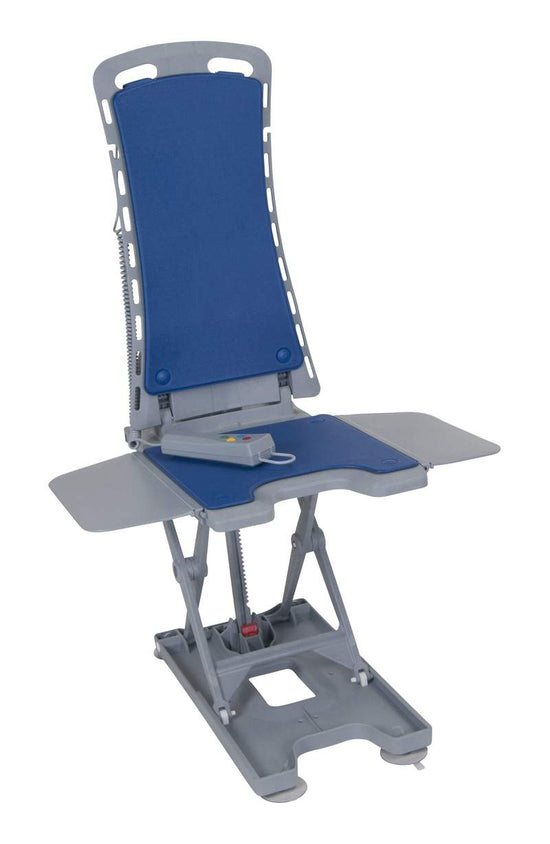Recovering from surgery can be a challenging journey, calling for not just the right care but also the right environment. It's increasingly recognized that the comfort and familiarity of one’s own home can significantly bolster the recovery process. In this light, the adaptation of hospital beds for home use is gaining momentum among patients and caregivers alike.
These specialized beds offer a blend of support, safety, and convenience, addressing the unique needs of post-surgery recovery outside the clinical setting. This trend underscores a broader shift towards personalized healthcare solutions, where patient preferences and quality of life are paramount. Let's delve into the reasons behind the growing preference for hospital beds at home during the critical post-surgery recovery period, exploring the features and benefits that make them an attractive option for many.
Understanding the Features of Hospital Beds for Home Use
When considering the transition from hospital to home for post-surgery recovery, understanding the features of hospital beds designed for home use becomes paramount. These beds are not just any pieces of furniture; they are sophisticated pieces of medical equipment that can significantly enhance the comfort and safety of patients during their recovery period.
One of the core features of these beds is their adjustability. According to sdexpmedical.com, hospital beds commonly feature adjustable head and foot sections. This allows patients to elevate their upper bodies or legs independently, aiding in circulation, reducing swelling, and alleviating pain—key factors in the recovery process. This adjustability also supports various activities, such as reading, eating, and even certain exercises, without compromising the patient's comfort or safety.
Another critical aspect is the inclusion of safety features. As highlighted by hhmewf.com, hospital beds should come equipped with bed rails, locking mechanisms, and emergency controls. Bed rails provide support and prevent falls, a crucial concern for patients in a weakened state or with mobility issues. Locking mechanisms ensure the bed remains stable when adjustments aren't being made, and emergency controls allow for quick adjustments in case of an urgent need.
Moreover, choosing between manual, semi-electric, or full-electric models is essential, as noted by rehabmart.com. While manual beds are cost-effective, they require physical effort to adjust. Semi-electric and full-electric beds offer ease of use through simple push-button controls, making it easier for patients and caregivers to adjust the bed's position as needed.
For those ready to create a safe and comfortable recovery environment at home, exploring these features is the first step. For a wide selection of hospital beds that cater to these needs, consider Everything Medical. They offer a comprehensive range of Home Medical Equipment and Supplies, ensuring you find the perfect fit for your post-surgery recovery needs at home.
The Psychological Benefits of Recovering at Home
Recovering at home after surgery not only offers physical comfort but also brings significant psychological benefits. The familiar surroundings, the presence of loved ones, and the autonomy over one's daily routine contribute to a more positive recovery experience. Here’s how:
- Familiar Environment: The comfort of being in one's own space can drastically reduce stress and anxiety levels. Familiar sights, sounds, and even smells can have a calming effect, making patients feel safer and more secure during their recovery.
- Presence of Family and Friends: Recovery at home allows for constant support from loved ones. This emotional support is crucial for mental health, as it boosts morale, reduces feelings of isolation, and fosters a positive outlook towards recovery.
- Personalized Care: At home, care can be tailored to the patient's specific needs and preferences, unlike the one-size-fits-all approach often found in hospitals. This personalization can lead to greater satisfaction and comfort during the recovery process.
- Reduced Risk of Hospital-Acquired Infections: Recovering at home minimizes the risk of exposure to hospital-acquired infections, which is a significant concern for post-surgery patients. This peace of mind can positively impact mental well-being.
- Control Over One’s Environment: Having control over lighting, noise, and visitation hours can significantly improve the quality of rest and overall comfort. This autonomy is empowering for the patient and can accelerate the healing process.
- Integration into Daily Life: Being at home allows patients to gradually reintegrate into their daily routines, fostering a sense of normalcy and productivity that can be beneficial for mental health.
The transition to recovery at home, facilitated by the use of hospital beds, offers a holistic approach to healing, addressing both physical and psychological needs. Embracing this option can lead to a more comfortable, peaceful, and ultimately, successful recovery journey.
Comparing Recovery Environments: Home vs. Hospital

When it comes to post-surgery recovery, the environment plays a crucial role in the patient's healing process. The choice between recovering at home or staying in the hospital is significant, each offering its unique advantages and challenges. Let's delve into the comparison:
Hospital Recovery:
- Professional Care: Immediate access to medical professionals and emergency care. Nurses and doctors are on hand 24/7 for any needs that arise.
- Advanced Equipment: Hospitals are equipped with the latest medical technology for monitoring and treatment, which can be critical for patients with complex needs.
- Infection Risk: Despite stringent cleaning protocols, the risk of hospital-acquired infections remains a concern, potentially complicating the recovery process.
- Limited Privacy and Comfort: Hospital stays often mean sharing rooms and facing constant interruptions, affecting rest and privacy.
Home Recovery:
- Comfort and Familiarity: Recovering in one’s own home offers a comfortable and familiar environment, which can foster a sense of well-being and accelerate healing.
- Personalized Care: Caregivers can provide one-on-one attention, and care routines can be tailored specifically to the patient’s preferences and needs.
- Reduced Infection Risk: The home environment typically poses a lower risk of exposure to infectious diseases compared to hospitals.
- Family Support: Being surrounded by family and loved ones can offer emotional support, contributing positively to the recovery process.
- Cost-Effectiveness: Home recovery can significantly reduce the costs associated with prolonged hospital stays.
The introduction of hospital beds for home use bridges the gap between these two environments, combining the comfort and personalized care of home recovery with some of the safety and functionality features of hospital care. This hybrid approach allows patients to enjoy the best of both worlds, making it an increasingly popular choice for post-surgery recovery.
Guidelines for Setting Up a Post-Surgery Recovery Space at Home
Setting up a post-surgery recovery space at home is crucial for ensuring a safe, comfortable, and efficient healing process. Here are key guidelines to consider when creating an optimal recovery environment:
- Select the Right Location: Choose a quiet, easily accessible room on the first floor to minimize movement and avoid stairs. Ensure the room has enough space for a hospital bed and allows for easy navigation.
- Invest in a Hospital Bed: A quality hospital bed is central to a home recovery space. Look for beds with adjustable features for comfort and mobility, as well as safety rails to prevent falls.
- Ensure Adequate Lighting: Good lighting is essential. Natural light can boost mood and aid in the recovery process, while adjustable bedside lamps or overhead lights improve visibility during night-time care.
- Organize Essential Items: Keep necessary items within easy reach. This includes medications, water, snacks, remote controls, phone, and personal care items. Consider a bedside table with multiple compartments.
- Maintain a Comfortable Climate: The room should be well-ventilated and maintain a comfortable temperature. Use fans, heaters, or air conditioning as needed, and keep extra blankets and pillows handy.
- Install Safety Features: Consider installing grab bars in the bathroom and ensuring there are no tripping hazards like loose rugs or electrical cords in the recovery space.
- Create a Positive Environment: Personal touches such as photos, favorite books, or plants can make the recovery space more welcoming and promote a positive mindset.
By following these guidelines, you can create a supportive and efficient recovery space at home. This preparation not only facilitates physical healing but also addresses the emotional and psychological aspects of recovery, making the transition from hospital to home as smooth as possible.
Post-Surgery Care: Best Practices and Recommendations
Effective post-surgery care is pivotal for a smooth and swift recovery process. Adhering to best practices and recommendations can significantly enhance the healing journey, especially when recovery is at home. Here are some essential tips:
Follow Medical Advice:
- Strictly adhere to all instructions provided by healthcare professionals regarding wound care, medication schedules, and activity levels.
- Attend all follow-up appointments to monitor recovery progress.
Pain Management:
- Use prescribed pain medications as directed to manage discomfort. Do not wait for the pain to become unbearable before taking medication.
- Employ non-pharmacological methods like deep breathing, meditation, or gentle movement (as advised) to aid pain relief.
Nutrition and Hydration:
- Consume a balanced diet rich in vitamins, minerals, and proteins to support tissue repair and boost immunity.
- Stay well-hydrated to promote overall health and facilitate medication metabolism.
Mobility and Exercise:
- Engage in recommended physical activities to prevent complications such as blood clots and to improve circulation.
- Avoid strenuous activities and gradually increase movement based on professional guidance.
Wound Care:
- Keep surgical sites clean and dry to prevent infection.
- Regularly inspect wounds for signs of infection, such as increased redness, swelling, or discharge.
Emotional Support:
- Seek emotional support from family, friends, or professional counselors to navigate the psychological challenges of recovery.
- Create a positive, stress-free environment conducive to healing.
Utilize Adaptive Equipment:
- Incorporate tools like hospital beds, shower chairs, and handrails to enhance safety and independence at home.
- Adjust living spaces to make daily activities more manageable.
By following these best practices and recommendations, patients can optimize their recovery experience at home. The integration of hospital beds into home care settings underscores the importance of comfort, safety, and adaptability in the post-surgery recovery process, aligning with the overall goal of achieving the best possible outcomes.




